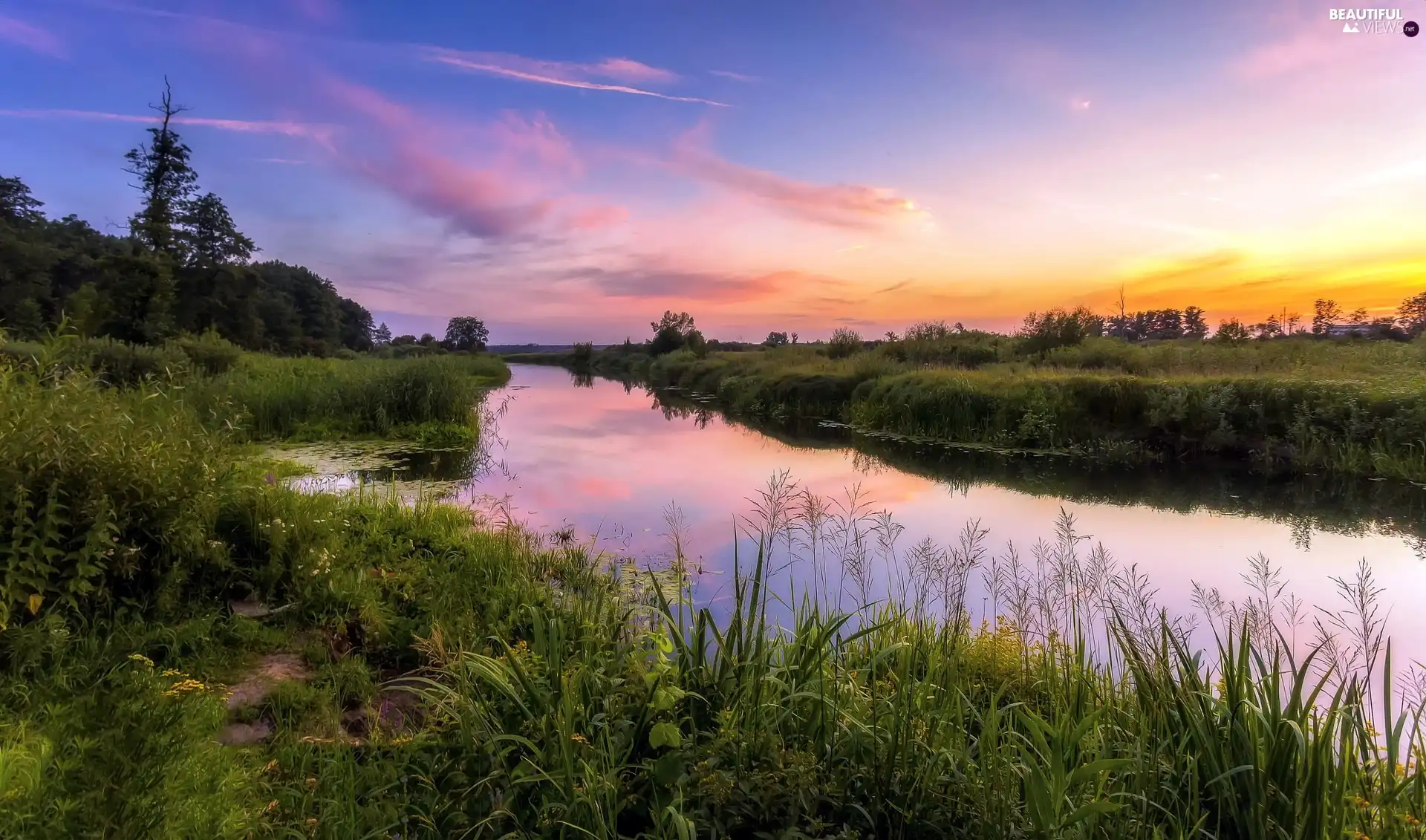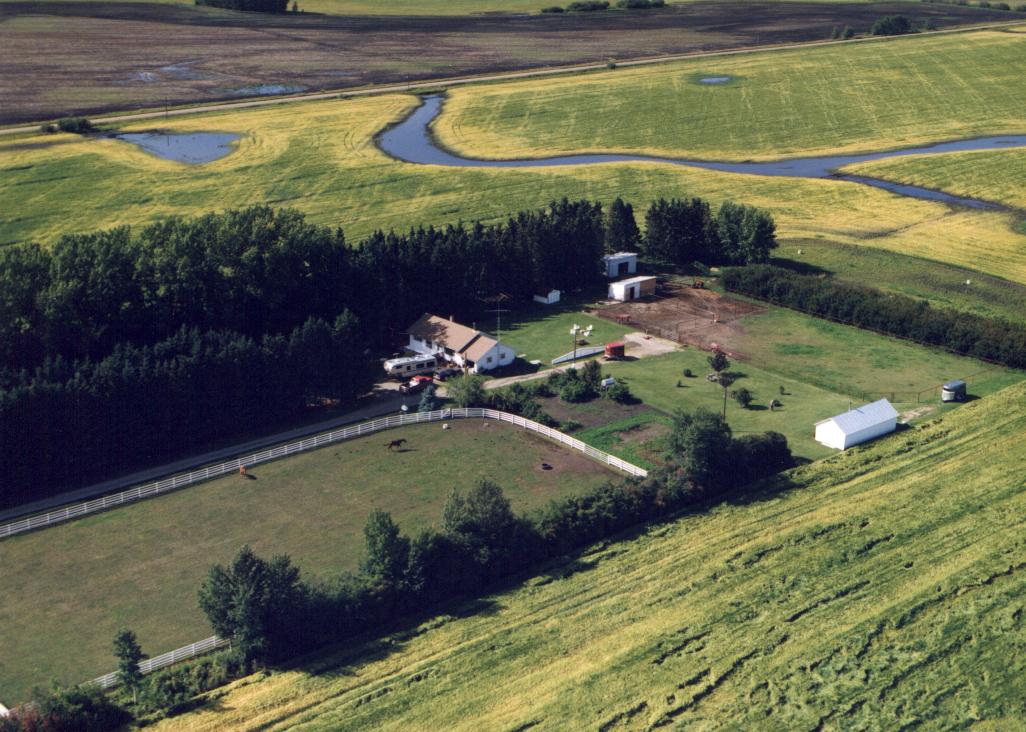Is there a solution to the building problem?
Before you buy a property with wetlands, what should you know?
You shouldn’t go into the process blind if you want to invest in a parcel with wetlands.
This purchase carries some potential dangers.
When considering whether or not to build on wetlands, keep these top considerations in mind.
IF YOU WANT TO MAKE MONEY FROM WETLANDS THEN YOU MUST READ OUR LATEST ARTICLE ON HOW TO MAKE MONEY FROM WETLANDS
What is a wetlands?
How might it affect the land I want to build on or the land I’m buying?
Wetlands are defined as "areas where water covers the soil or is present either at or near the surface of the soil all year or for varying periods of time during the year, including during the growing season" by the Environmental Protection Agency (EPA).
A wetland is an ecosystem within itself that is characterized by the presence of moving water and is home to a diverse variety of distinctive plant and animal life.
Some wetlands may be permanently saturated while others may be saturated only at specific times of the year.
Wetlands are an important part of the environment because they are part of an ecosystem.
When you buy land, there are two different kinds of wetlands you might encounter: inland and coastal wetlands with and without tides.
The kind you see will largely depend on where you are in the country.

Along the Atlantic, Pacific, Alaskan, and Gulf coasts are coastal or tidal wetlands.
On floodplains that run alongside rivers and streams, inland or non-tidal wetlands are more prevalent.
Additionally, isolated depressions surrounded by dry land may contain them.
These wetlands are more likely to be seasonal.
The Environmental Protection Agency’s Wetlands Factsheet Series contains more fundamental information about wetlands.
General information can help you better understand the difficulties you might face if you decide to build on wetlands or buy land with wetlands.
For more basic information about wetlands, you can visit the Wetlands Factsheet Series by the EPA.
Hire a professional to determine if your property contains wetlands before purchasing it.
It is the job of specialists in wetlands to identify and delineate wetlands.
When a developer or landowner wants to build on wetlands, they usually hire someone.
Individuals cannot be certified for this work through any programs that have been approved by the government.
However, a person working in this field typically possesses extensive training and professional experience in wetlands issues.
You should look for someone who has recommended and designed projects to mitigate wetlands, delineated wetlands, evaluated wetlands’ functions and values, analyzed wetlands’ impacts, and so on.
You can look for environmental services online or in the phone book to find a wetland expert.
You could also try contacting the planning office of your local government and asking for a list of professionals in the area.

It is best to hire a professional because the wetland consultant will probably know a lot about the area’s wetlands and be able to suggest a good course of action.
When looking for experts in wetlands, consider the following:
- Has the individual received additional education or expertise in fields that are related? You might think about ecology, botany, social science, hydrology, and other related fields.
- Is the individual familiar with federal, state, and local regulations pertaining to wetlands?
- Do you know how to use the 1987 Corps of Engineers wetland delineation manual? Does the individual have any training or experience with it? What about the appropriate supplement for the region?
- How long has the individual been working in the wetlands industry?
- Who were some of the person’s previous customers? Can they provide you with references, evaluations, or testimonials?
- Find out exactly with whom you would be working if you decide to hire a consulting firm.
- What is the individual planning to charge for their services? How does this measure up to the rest of the area?
Use the Wetlands Mapper as a free alternative to conduct research. Can’t afford to hire a private consultant for a property you might never buy?
You won’t be alone!
Although hiring a wetland consultant or requesting a visit from the U.S. Army Corps of Engineers to carry out a wetland identification and delineation of the property is the only way to be absolutely certain that it contains wetlands, there are other options.
One option is to make use of The Wetlands Mapper.
The U.S. Fish & Wildlife Service offers a free tool called the Wetlands Mapper that makes it simple and quick to determine whether a piece of land contains wetlands.
Again, using this tool to delineate your property is less of a “sure thing” than hiring a consultant.
Nevertheless, it can be a useful starting point and provide you with additional information.
MapRight also lets you find wetlands and many other useful property features, but it’s not free.
Because they are protected areas, wetlands may pose a problem for building.
One of the main reasons you might not be able to build on them is that they are protected areas.
Wetlands are one of the world’s most productive ecosystems and contribute significantly to the watershed’s ecology.
There is even a World Wetlands Day because of the significance of wetlands!
Because the water that is contained within the wetland will need to move somewhere else, filling in wetlands may also have negative effects on property owners in the surrounding area.
The government regulates who can significantly alter a wetlands for these reasons.
According to Section 404 of the Clean Water Act, wetlands regulations are typically enforced by the US Army Corps of Engineers.
However, the Environmental Protection Agency (EPA) has a number of programs that protect wetlands, particularly in well-known areas like the Gulf of Mexico, Chesapeake Bay, and the Great Lakes.

Generally, depending on what you want to do with the land, you will need a permit from the Army Corps of Engineers.
However, there are a few exceptions in the form of certain enduring, but not brand-new, uses in farming and forestry.
CERTAIN ACTIVITIES MAY REQUIRE A WETLAND PERMIT,
As previously stated, certain activities frequently require a wetland permit.
For instance, even if you already have a sanitary sewer Permit-to-Install (PTI) or a local zoning permit, you will still need separate permits for activities that have an impact on the wetlands.
Start with the U.S. Army Corps of Engineers and work your way up from there.
Please keep in mind that obtaining permits can take some time.
The U.S. Army Corps of Engineers offers a simpler nationwide permitting procedure for residential construction projects that will have no impact on non-tidal wetlands larger than half an acre.
However, you will still be building in a natural waterway even if you obtain a permit.
This indicates that water management within and around your building will most likely present ongoing challenges.
As a result, you should seriously think about other options before building on a wetland.
WETLANDS ARE VALUABLE FOR CERTAIN TYPES OF INVESTORS
While it may be challenging for you to construct on wetlands, this does not mean that they are worthless.
Because they are such a one-of-a-kind kind of ecosystem and still have the potential to be used for recreational purposes, wetlands may therefore appeal to you, depending on the kind of investor you are.
WETLANDS ARE IDEAL FOR PRIVACY
One of the advantages of wetlands is the amount of privacy they provide. While not all of the land is ideal for development, you can build on some of it and keep the rest natural—as long as it isn’t under jurisdiction.
Many of the problems you might encounter in more urban or suburban settings can be avoided if you choose not to live in an area with a lot of development.
If all of your property is made up of wetlands, it probably won’t be very valuable.
WETLANDS ARE HOME TO MANY DIFFERENT SPECIES
One of the restrictions on building on wetlands is due to the fact that they are home to many distinct species.
Even though someone who wants to build a house or a business on a parcel might not find this feature appealing, outdoor enthusiasts frequently find it appealing.
Wetlands can be appealing depending on the reason you’re looking for vacant land.
Wetlands should not be avoided, especially if you are looking for recreational land to hunt or camp on.
You may be able to invest as long as you can build on some of that land.
Investing in or near wetlands comes with a number of challenges that every land buyer should be aware of.
As a result, you shouldn’t buy this kind of thing for everyone, and you should know what you’re getting into before you do.
Wetlands are frequently protected by the government due to their “relatively permanent” connectivity to navigable waters in the United States. However, not all wetlands fall under this category.
They might also be protected for the sake of the environment.
Legislation is constantly changing this, so it’s always a good idea to check the current rules.
Keep in mind that the federal government does not regulate all wetlands.
It would not be jurisdictional to have an isolated wetland that does not have any surface connections to water, like pasture ponds, lagoons, or sinkholes.
Rice fields and crawfish ponds, two examples of agricultural lands that remain wet for particular crops, would not either.
This indicates that the government lacks regulatory authority over its actions.
In most cases, you will need to hire a consultant to determine whether your property contains jurisdictional wetlands.
You can hire a consultant to complete a wetland delineation if they find that your wetland is jurisdictional, meaning that the government has authority over it.
The consultant will use GPS, survey stakes or flags, or both to mark the boundaries of the jurisdictional wetland during this time.
You will be aware of which portion of the land you can develop in this manner.

In the vicinity of a jurisdictional wetland, there is also a construction procedure.
We are aware that it can be challenging to construct on a jurisdictional wetlands.
But even if you don’t want to build on a wetland, it can be a big project to build near one.
This is due to the fact that many construction projects will likely have an effect on the wetlands, even if they are not taking place within the boundaries of the wetlands.
Again, you’ll need to use the method above to find out if there are jurisdictional wetlands near your project.
There are three choices after determining that you are building near wetlands:
Avoidance:
The goal of this practice is to complete a task without causing harm to the wetland.
You might be able to avoid needing certain kinds of permits if you do this.
However, you should still follow best management practices to avoid harming the land from your work.
Minimization:
Because you will have an impact on the wetland, this method will require a permit.
You will, however, endeavor to have the smallest possible impact on the wetland, and because your project has a smaller impact on the wetlands, you may be able to avoid some of the slower permitting procedures.
Mitigation:
You can increase your chances of getting a permit by including a mitigation strategy in your permit application, even if your plans will have a significant impact on the wetlands.
You might, for instance, construct a brand-new wetland elsewhere on the property.
You need to ensure that the value of your mitigation will be at least equal to the amount of the wetland that will be destroyed during your project.
Even if you can build, there will be a lot of upkeep.
Even though you can build on wetlands as long as they are not under your jurisdiction, you will still face challenges.
The water that makes wetlands wet has to go somewhere when they get full.
You need to take into account the possibility that the water will cause damage to your home or business if you build on these lands.
Repairing this could cost you a lot of time and money as a homeowner.
You might want to think about investing in a different kind of property that doesn’t need as much upkeep as wetlands.
Wetlands are tricky and come with a lot of dangers.
Although it is possible to construct on some wetlands, you will face challenges.
Stop and think about whether you want to work through these or if it’s better to leave them alone.
However, even if only a portion of the property is wetland, it can still be a great investment.
Wait until you have done a thorough assessment of the land and gotten advice from wetland consultants before pumping your breaks.
While there are a number of dangers, one advantage of wetlands is that they are an area of land with a view.
It’s possible that you won’t be able to afford land by the sea or in the mountains.
Wetlands, on the other hand, offer a novel alternative.
For a low price, you can get a clear view of the natural world.
The disadvantage is that it is frequently challenging, if not impossible, to build on them.
In that regard, there is a trade-off.
Sometimes avoiding wetland areas together is easier.
You might think you’ve found the perfect piece of land.
However, let’s be honest: there are procedures that make development extremely challenging.
Always try to avoid constructing on wetlands if at all possible.
If you are aware that a potential property contains wetlands, construct elsewhere whenever possible.
Some construction projects fail because it is difficult to build in wet areas, despite the need for permits and environmental regulations.
Therefore, unless you intend to merely utilize the land for recreational purposes, you should steer clear of wetlands if at all possible.
While there are a number of dangers, one advantage of wetlands is that they are an area of land with a view.
